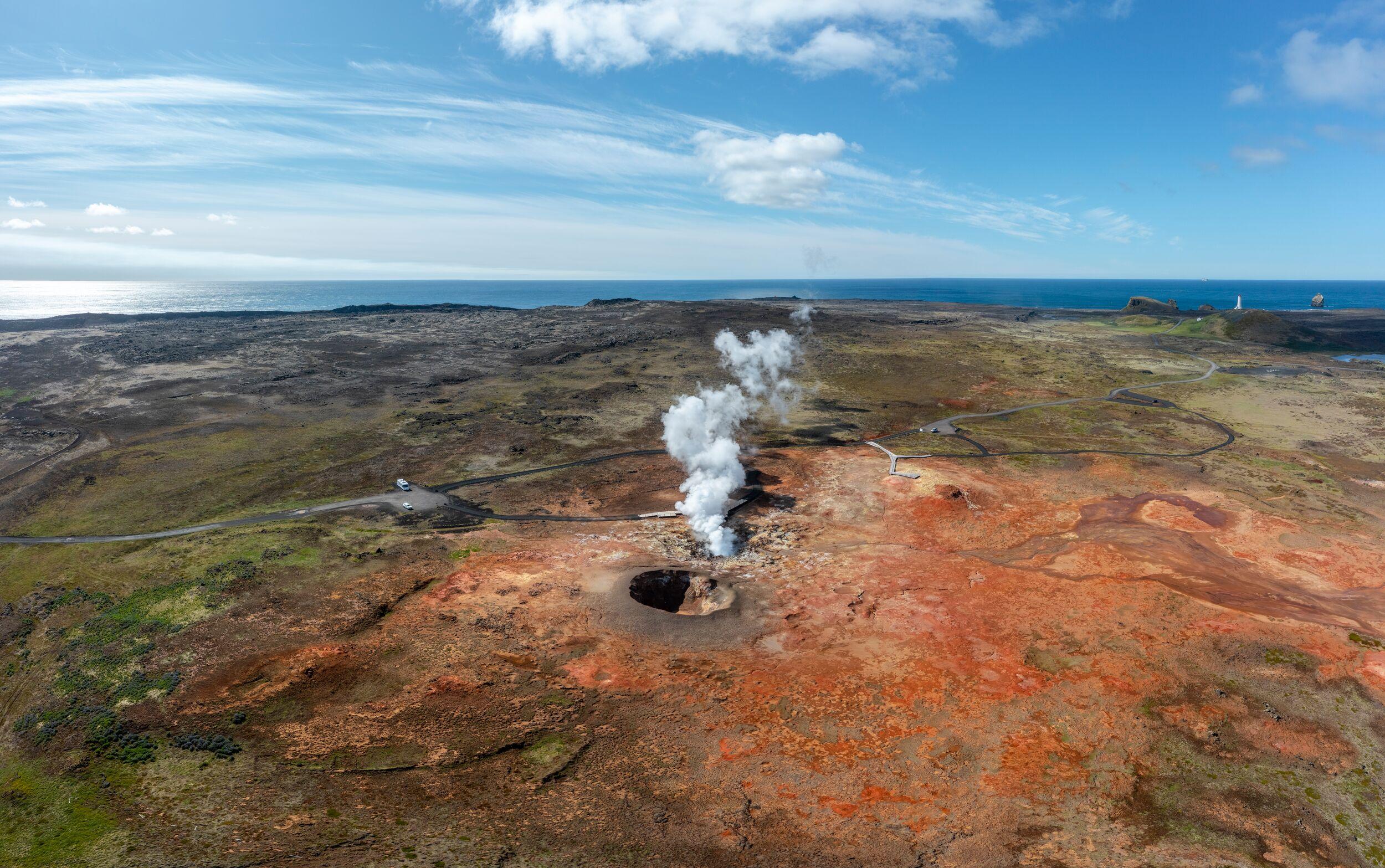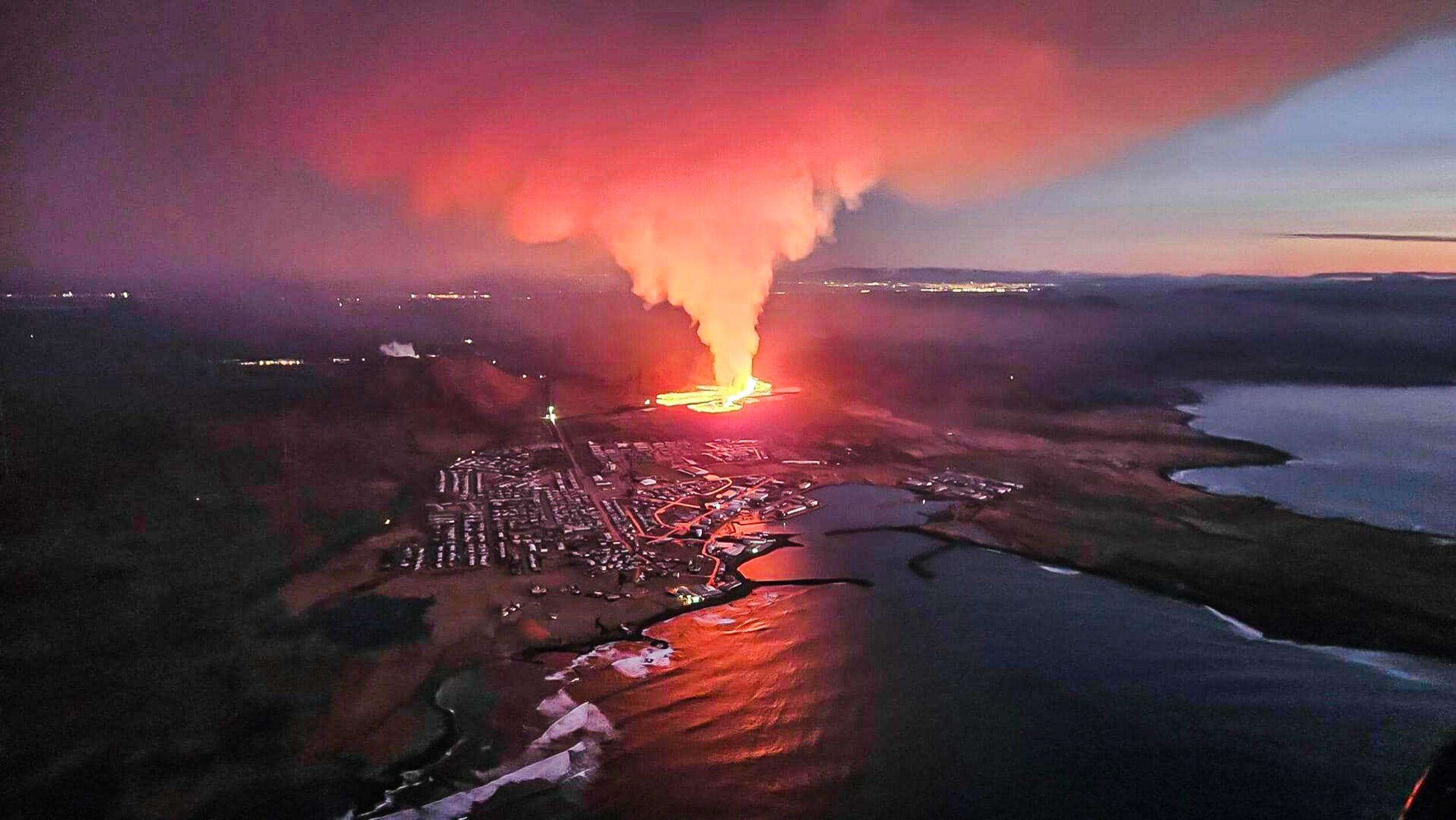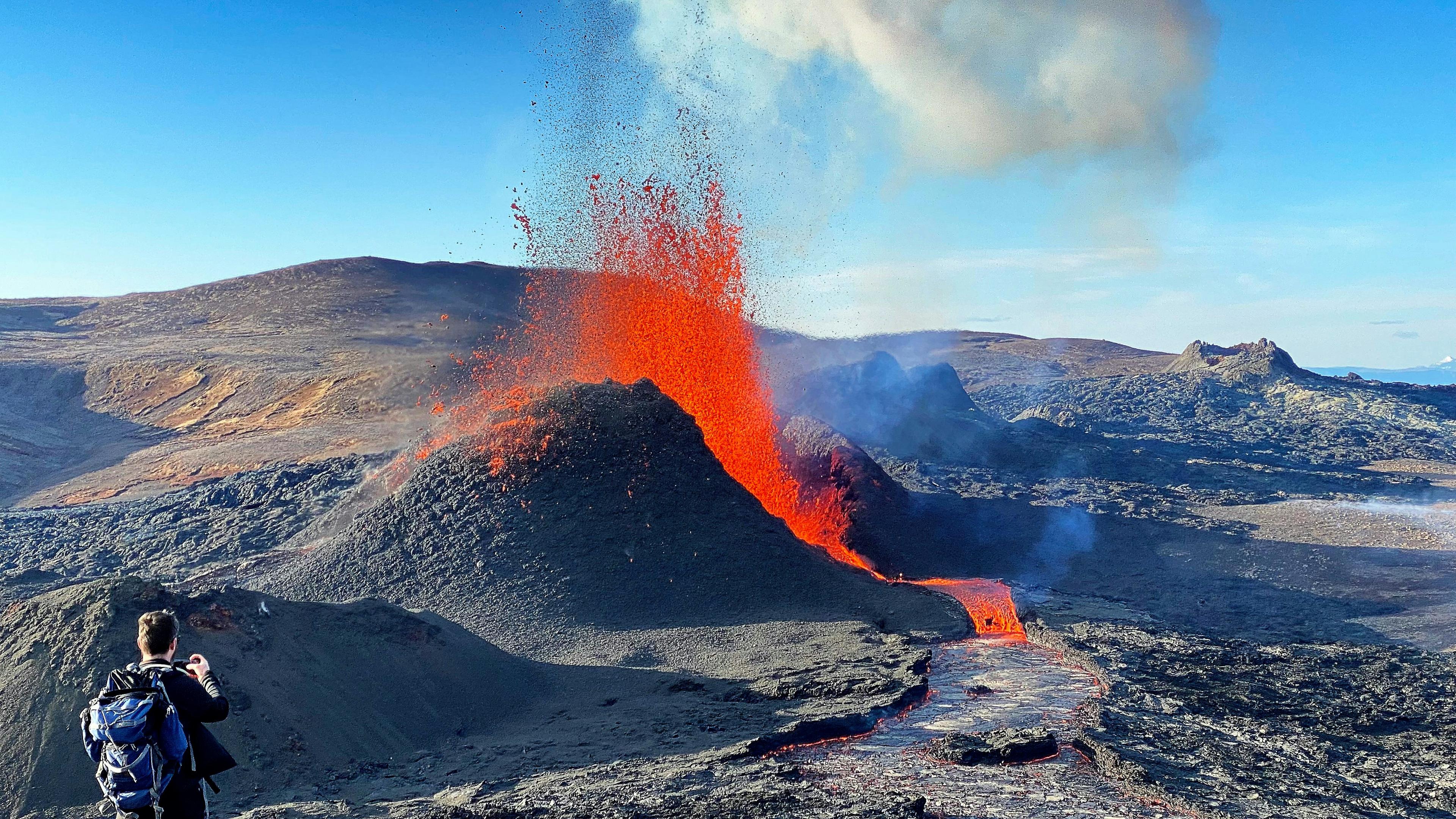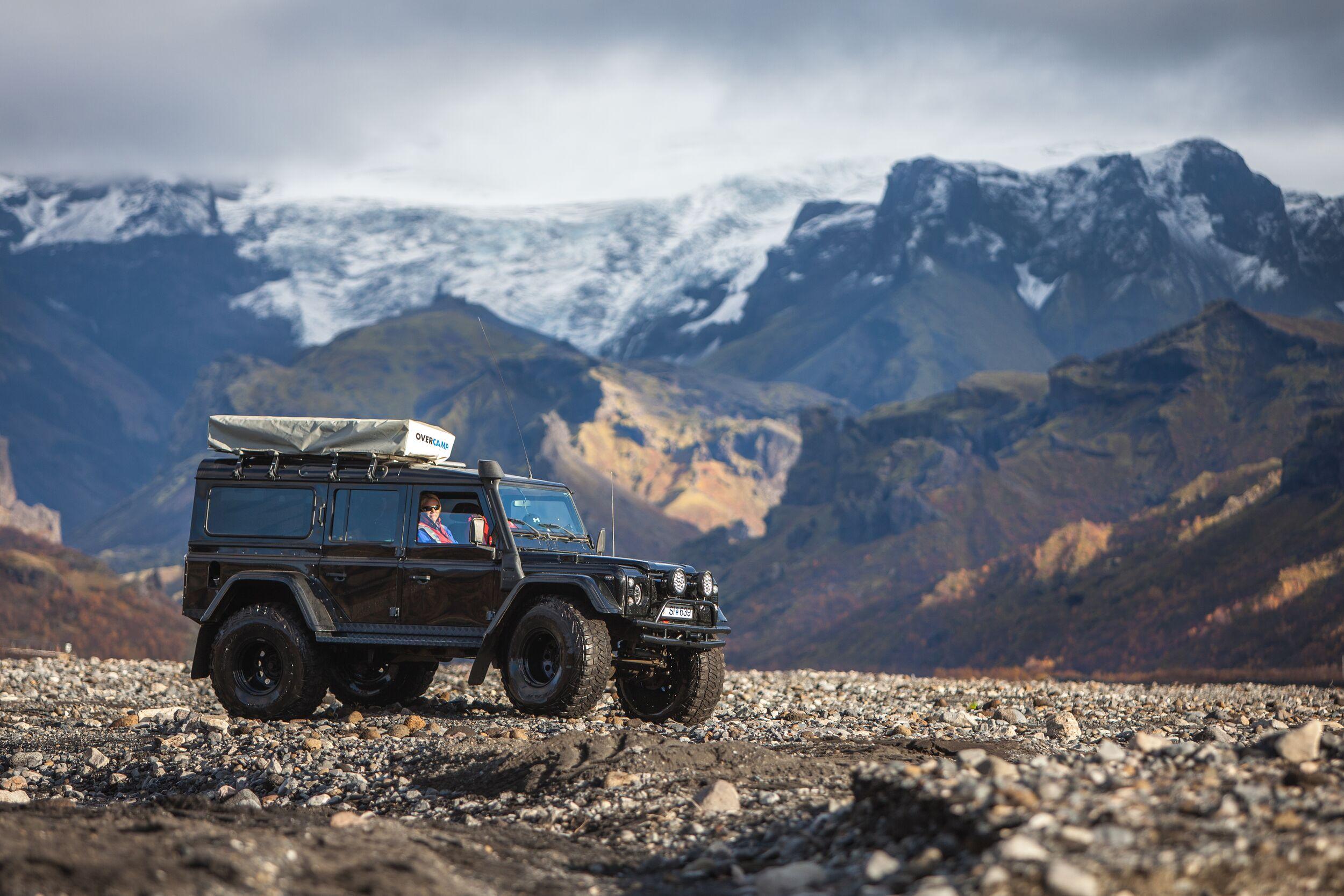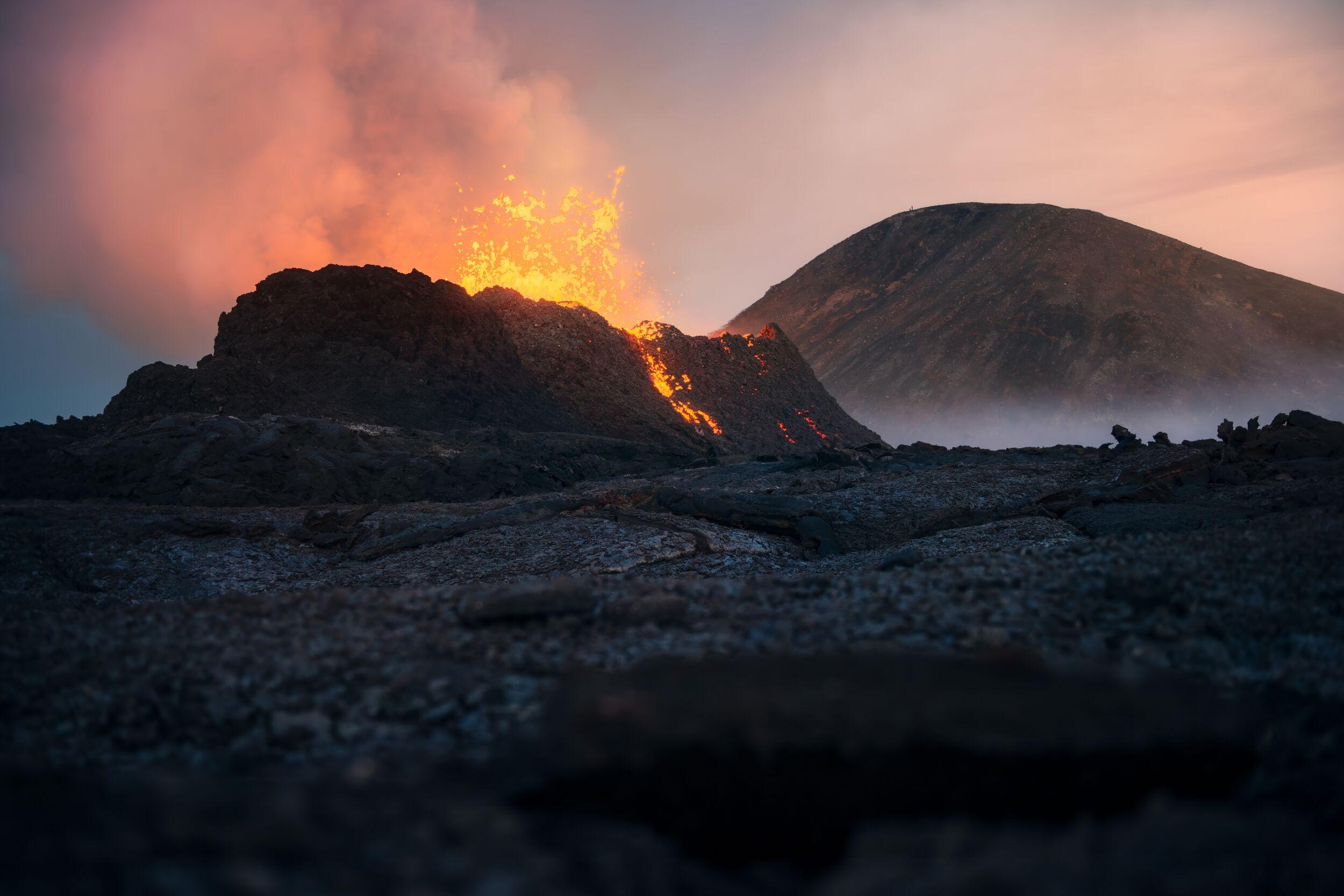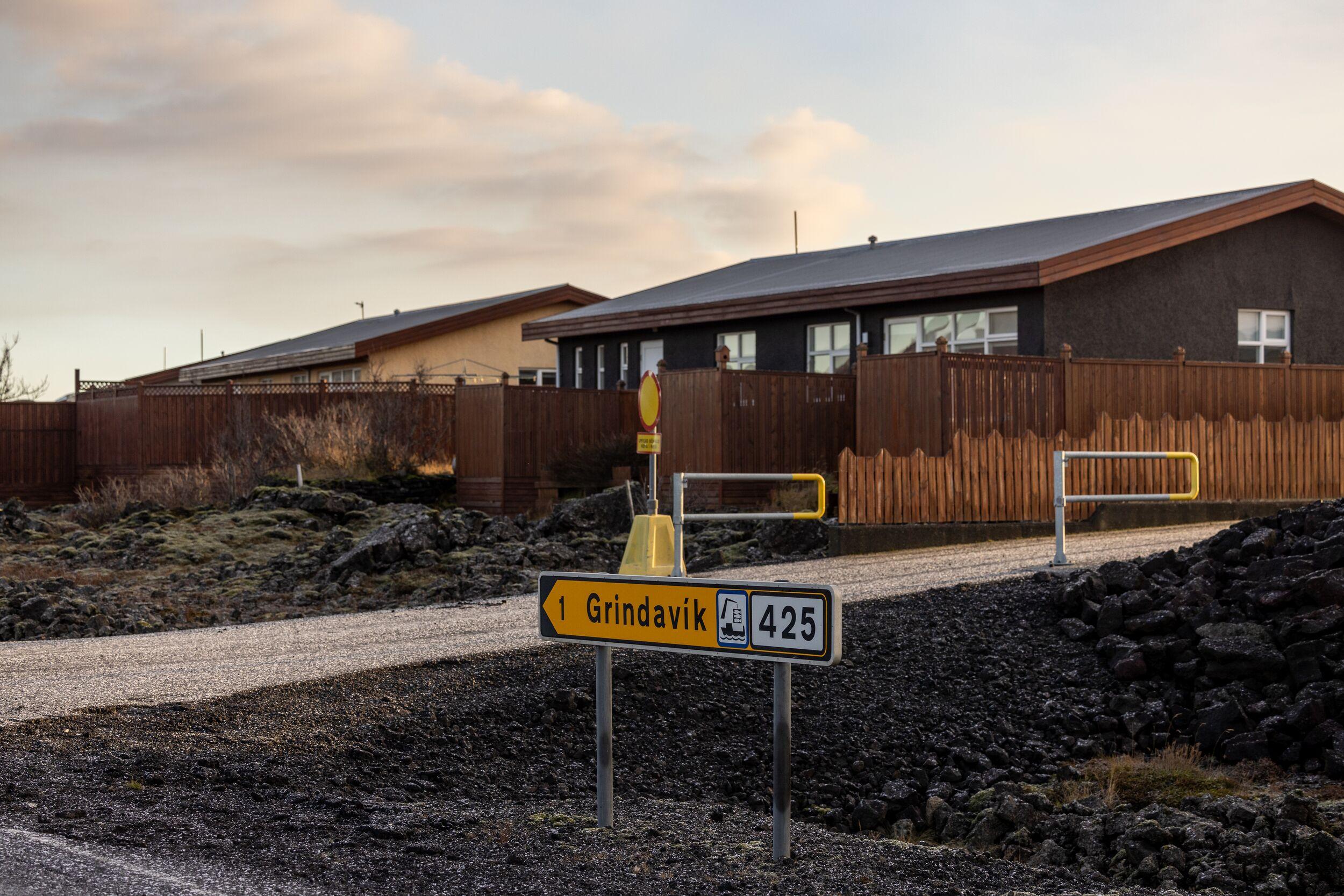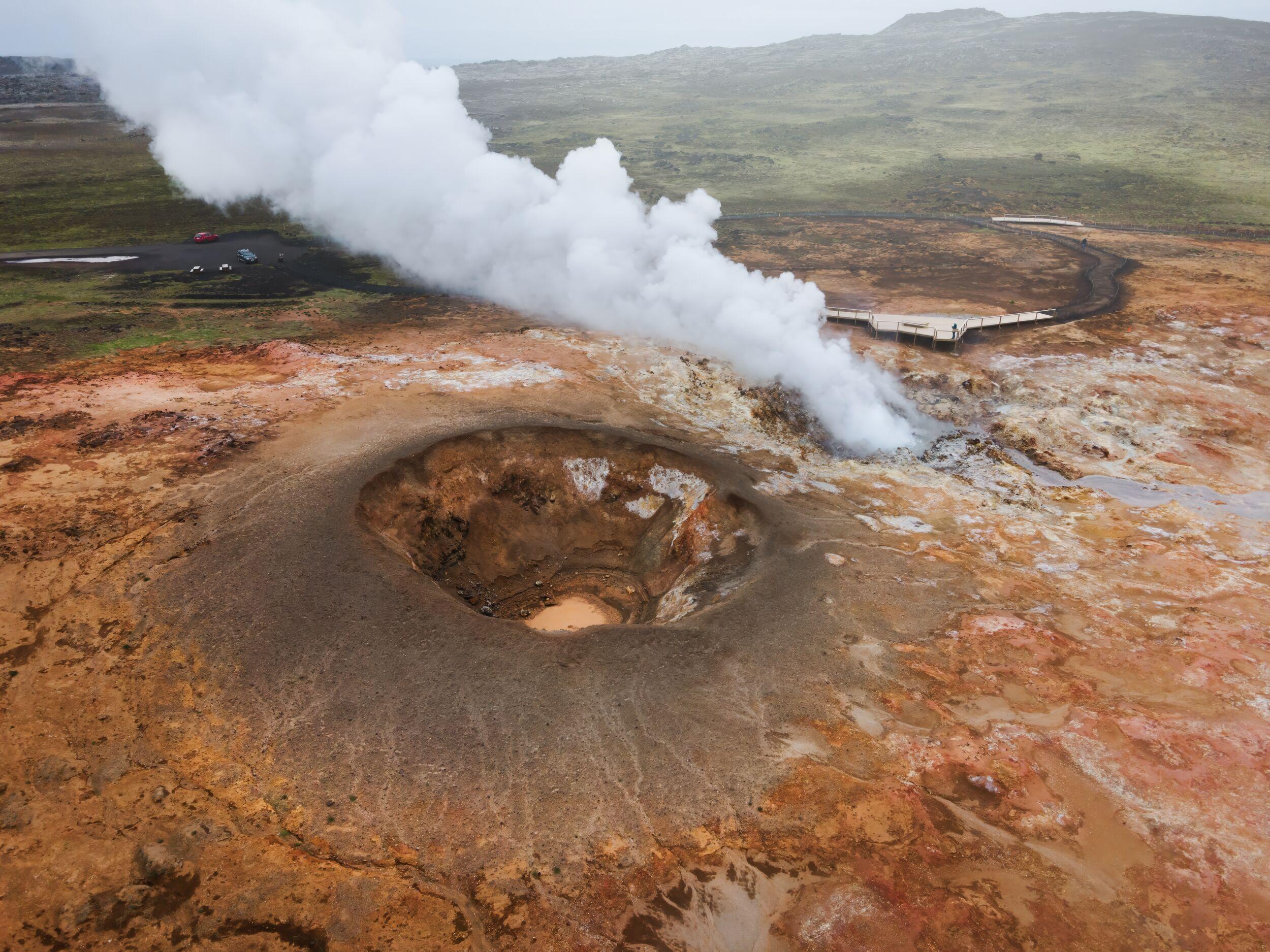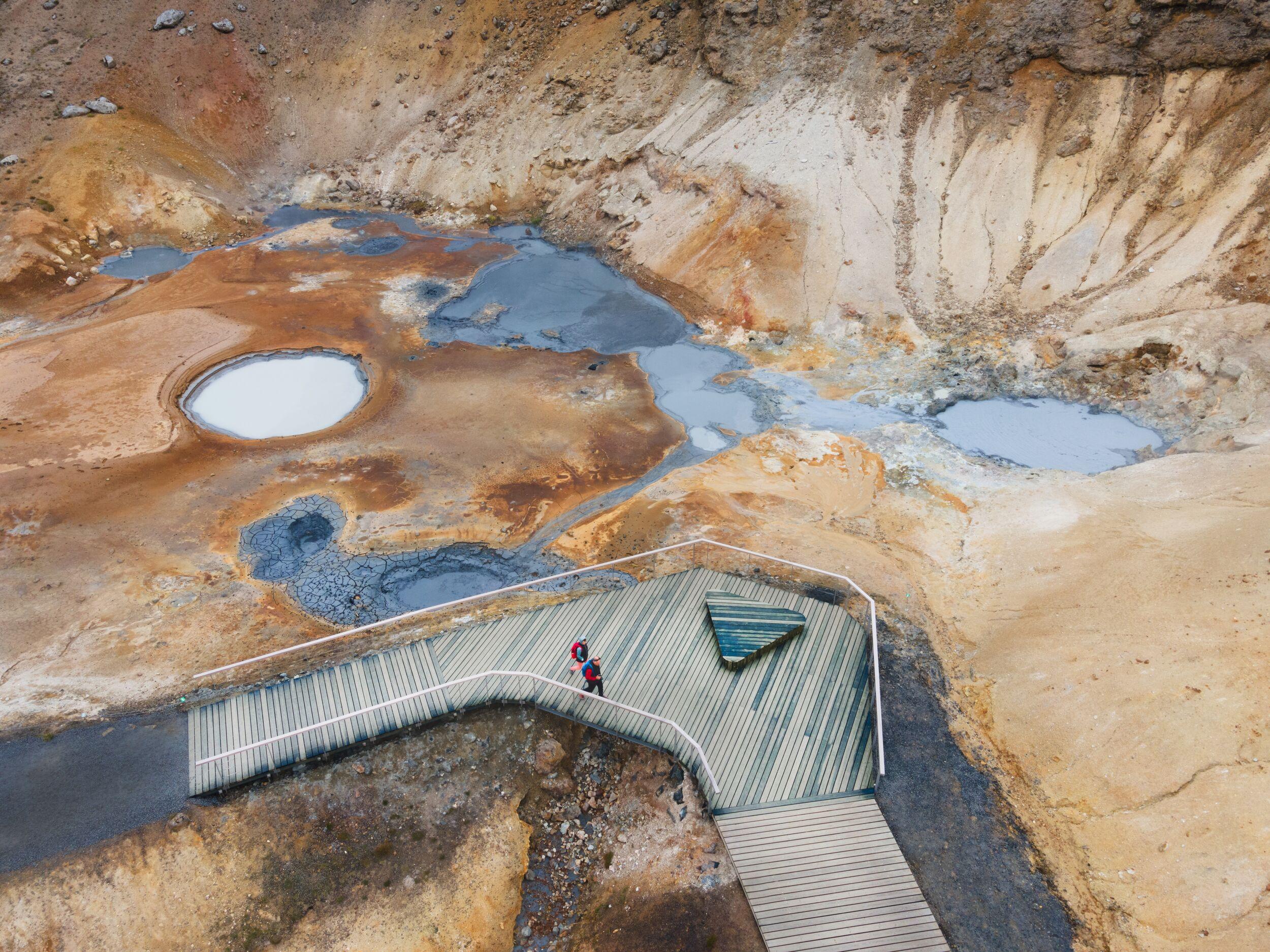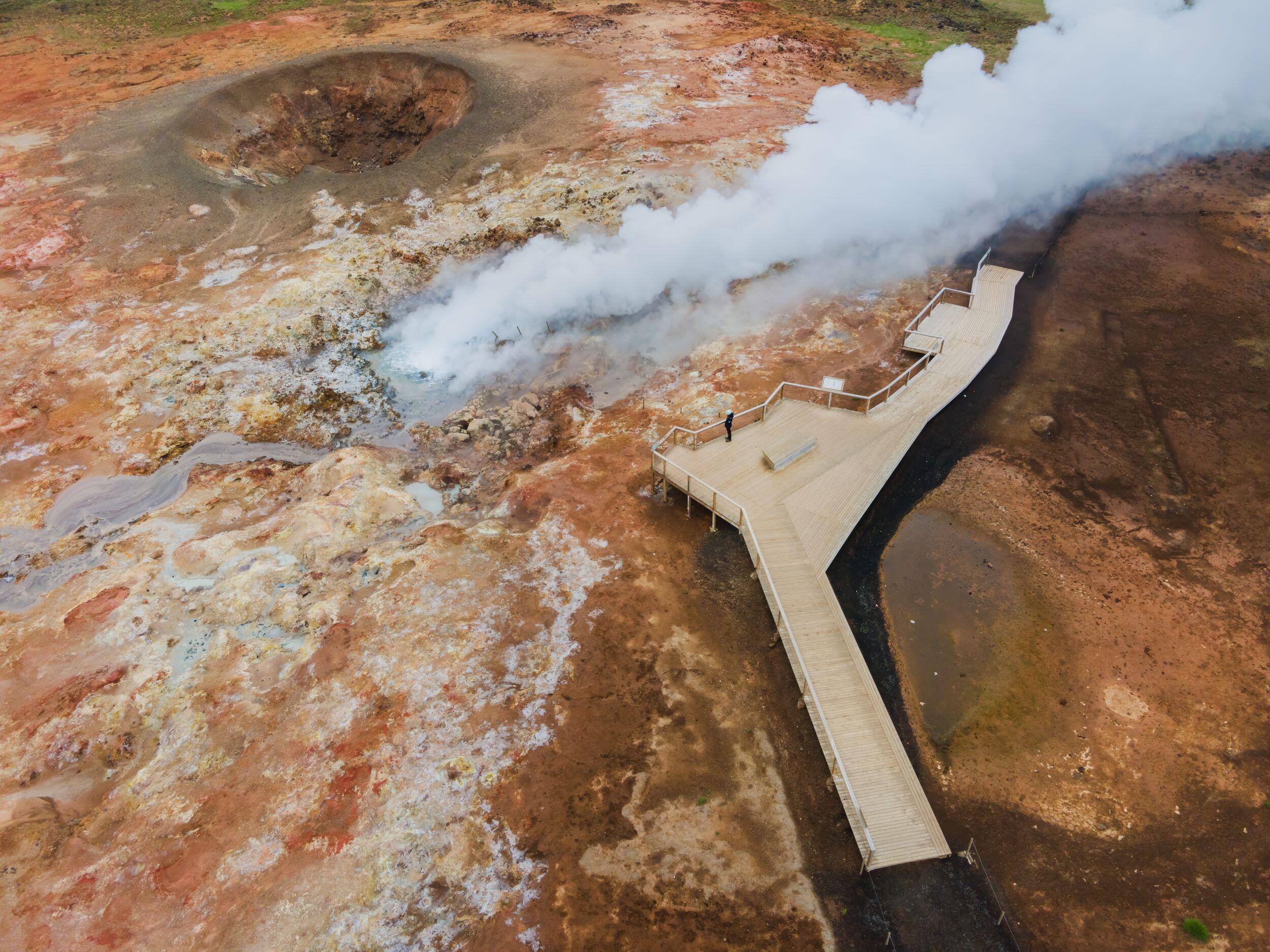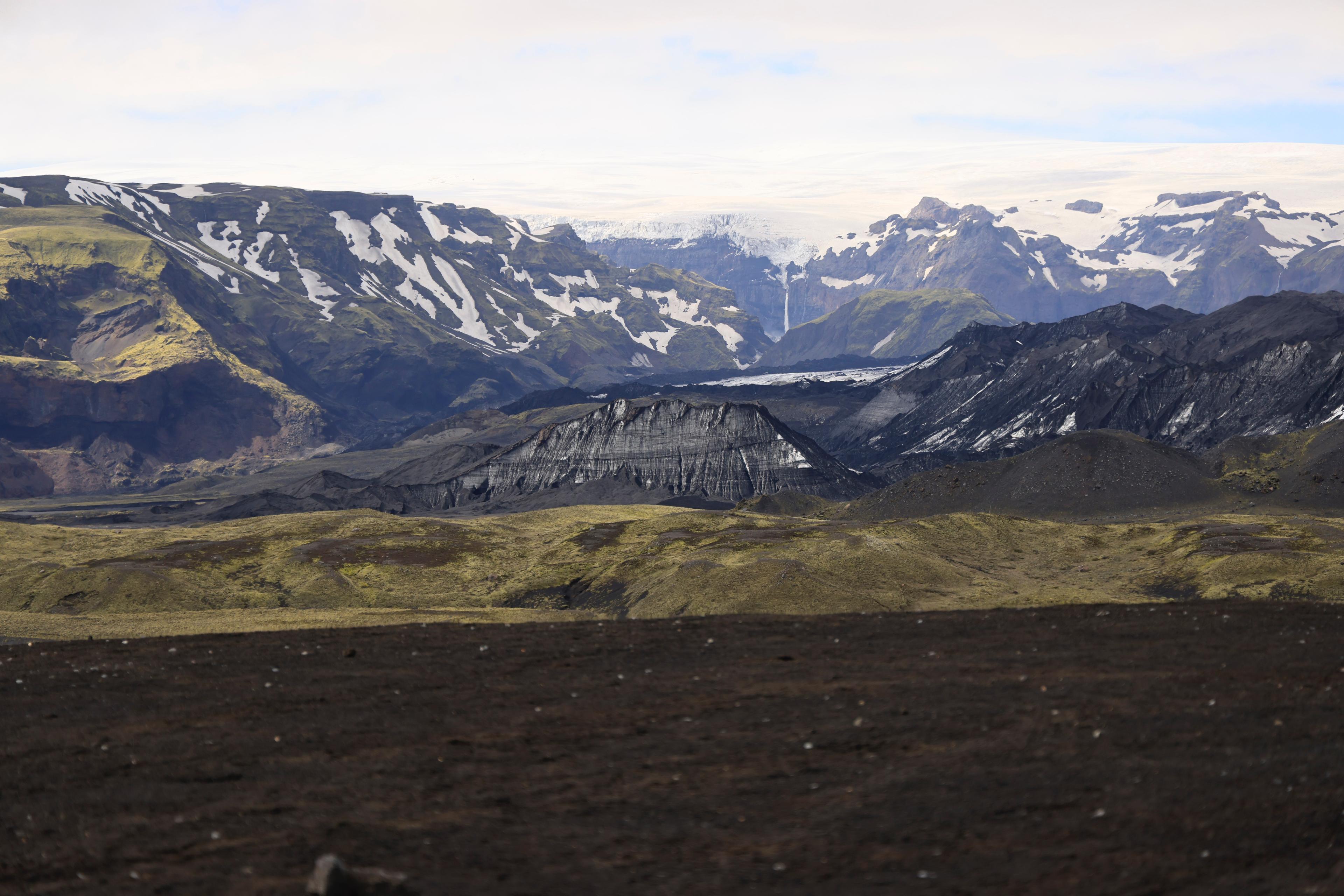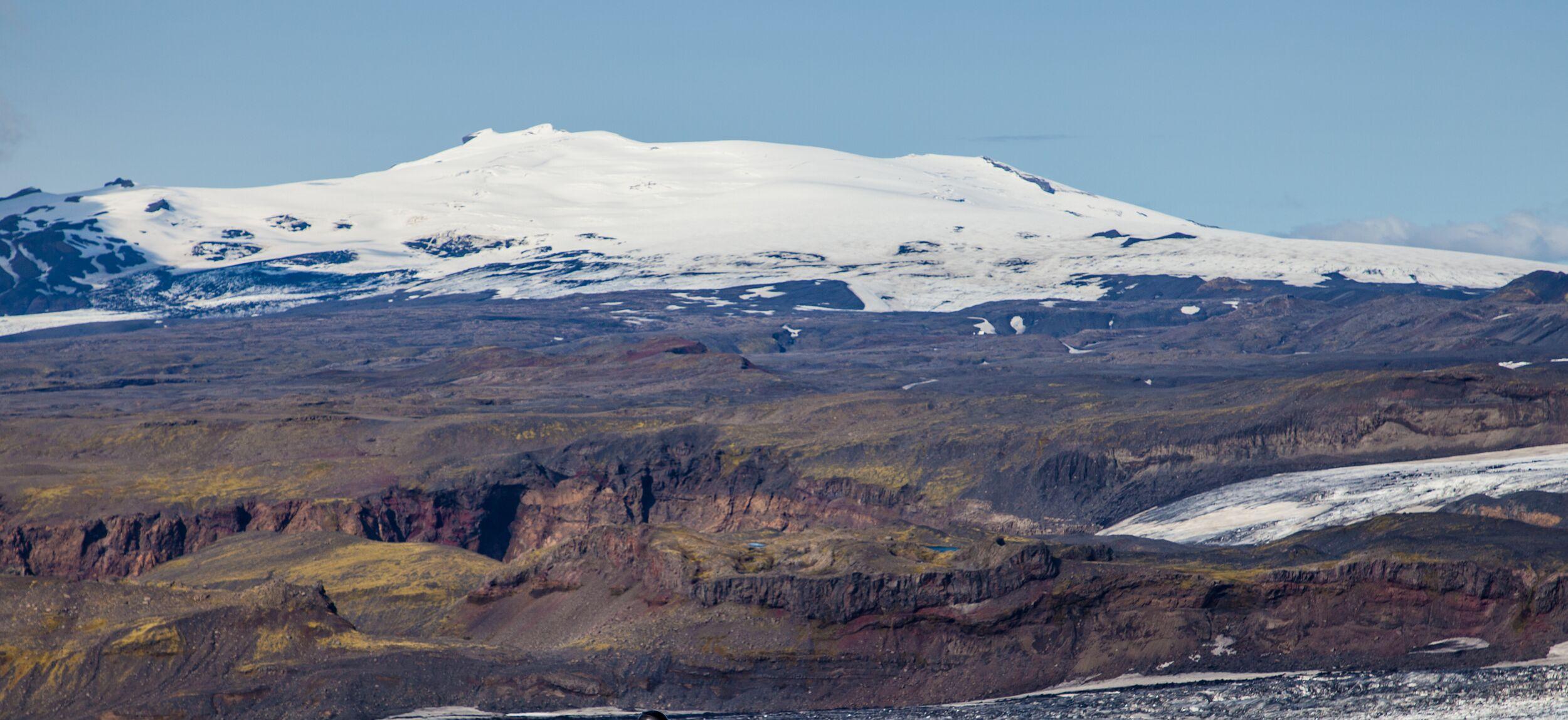Exploring Iceland’s Volcanic Landscapes: Top Tours and Tips
Table of Contents
- 1Some of the Most Memorable Eruptions in Icelandic History
- 2Recent Activity on the Reykjanes Peninsula
- 3Grímsvötn in Vatnajökull
- 4Eyjafjallajökull and Katla
- 5The Eruption of Eldfell Volcano on Heimaey Island
- 6The Laki Eruption: The Most Devastating Volcanic Event in Recorded History
- 7Must-See Volcanic Landscapes in Iceland
- 8Explore Iceland’s Volcanic Landscapes
- 9The Best Time to Visit Iceland’s Volcanic Landscapes
- 10How to Stay Safe on an Iceland Volcano Tour
- 11Questions and Answers about Iceland's Volcanoes
Iceland is one of the most volcanically active countries on the planet. It perches on the mid-Atlantic Ridge, where two of Earth’s largest tectonic plates are slowly shifting apart. There are 32 active volcanic systems in the country and around ten times that amount of individual volcanoes. Formed by fire and sculpted by ice and water, it’s no surprise that Iceland’s landscapes are unrivalled in their beauty – even more compelling as you realise that they’re still evolving.
In this guide, we’ll highlight Iceland’s top volcanic destinations, including volcanoes such as Fagradalsfjall, the Fimmvörðuháls trail, Askja caldera and the Krafla lava fields. We’ll give you an overview of some of the tours you might take, from helicopter tours to hiking expeditions.
With advice on when the best times to visit are, how to stay safe and how to prepare for their unpredictable nature, after reading this guide, you can be confident that your encounter with Iceland’s volcanic landscapes will be memorable for all the right reasons.
Get More Tips!
Subscribe now for useful tips and exclusive offers!
Some of the Most Memorable Eruptions in Icelandic History
Looking back over Iceland’s recorded history, there’s some kind of volcanic activity on average every five years. Often, these eruptions have a minimal effect on the landscape and on the people who live near them. But sometimes, events happen which have far-reaching consequences.
Recent Activity on the Reykjanes Peninsula
Since 2021, all eyes have been on the Reykjanes peninsula where there has been an intermittent, ongoing eruption. It began with six months of magma erupting from Fagradalsfjall, which produced breathtaking displays of fountains and river-like flows as lava poured out and reshaped the valley.
Further eruptions took place in 2022 near the original eruption site and in 2023 at Litli-Hrútur. It is usually possible to safely hike to these sites, though check official advice before doing so.
Since then, the active zone has shifted to the west. Separate fissures have opened up; those occurring from December 2023 to the present are collectively referred to as the Sundhnúkagígar Crater Row Series.
This phase of the eruption forced the evacuation of the town of Grindavík and has at times led to temporary closures of the iconic Blue Lagoon. Grindavík has recently reopened to the general public, and the Blue Lagoon awaits visitors as well.
The Fagradalsfjall Eruption in March, 2021
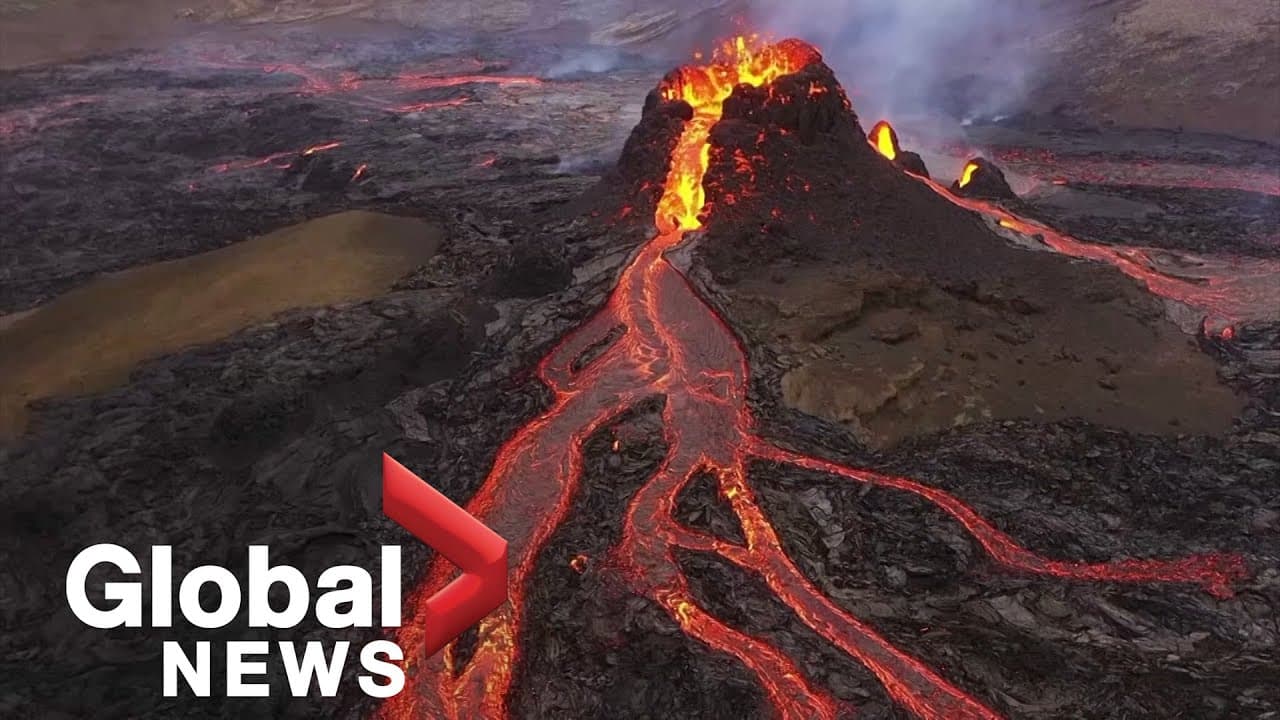
Grímsvötn in Vatnajökull
Grímsvötn is Iceland’s most active volcano – around 70 eruptions have been recorded in the past thousand years. It sits under the Vatnajökull ice cap and its volcanic activity is often linked to jökulhlaups, which are potentially devastating glacial floods that can either trigger or be triggered by a volcanic eruption.
The most recent eruptions of Grímsvötn took place in 2004 and 2011. They were explosive events, typical of this volcano, spewing large quantities of ash and tephra into the air. In 2011, the eruption progressed quickly; with little warning, the plume soared to more than 12 miles high. A week later, it was over.
Volcanic Eruption in Grimsvötn
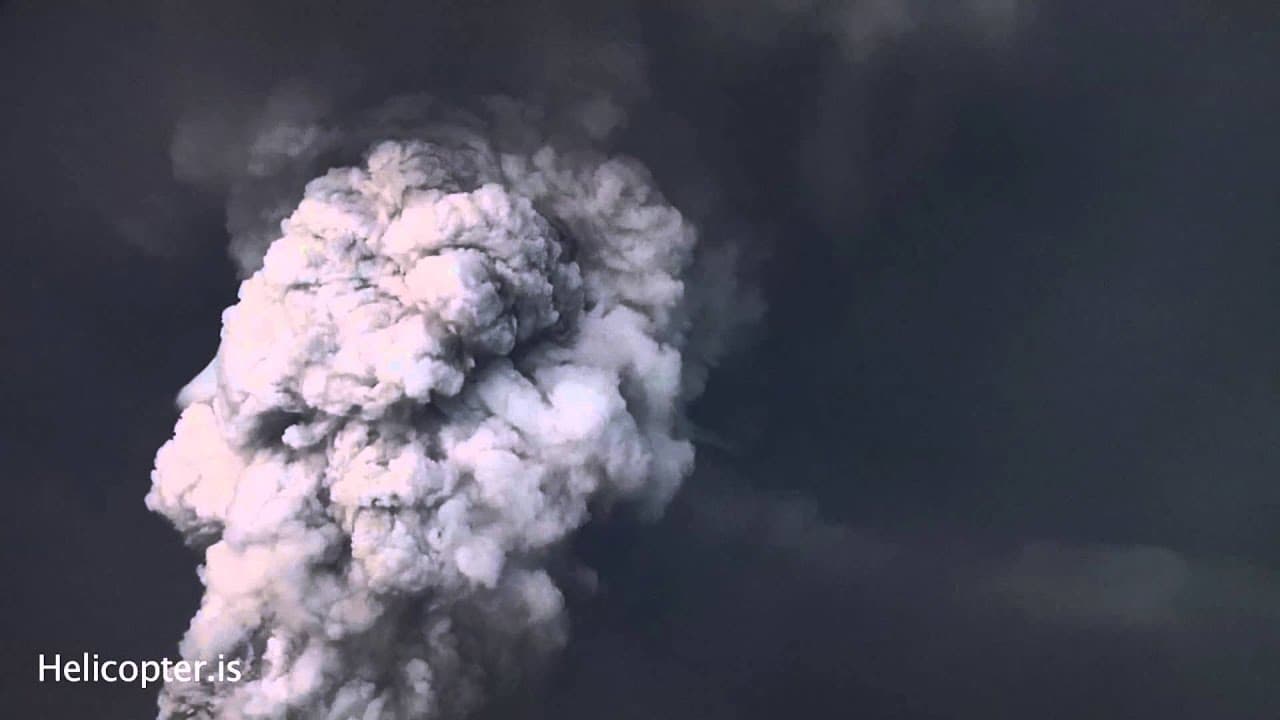
Eyjafjallajökull and Katla
There’s perhaps no Iceland volcano more infamous than Eyjafjallajökull. In 2010, this subglacial volcano dramatically erupted. The ice-filled summit caldera blew, sending a massive plume of ash and volcanic gases high into the air.
Such ash is a major hazard for aircraft, and this eruption caused chaos for air travellers as it forced the closure of airspace and impacted the busy trans-Atlantic and European flight paths.
Volcanologists watched nervously as historically, activity at Eyjafjallajökull has sometimes occurred simultaneously with an eruption of Katla. Katla sits beneath Mýrdalsjökull glacier and has traditionally been much more active than its now-notorious near neighbour. It last erupted in 1918 and some scientists suggest an eruption could be overdue.
Eyjafjallajökull Eruption, 2010
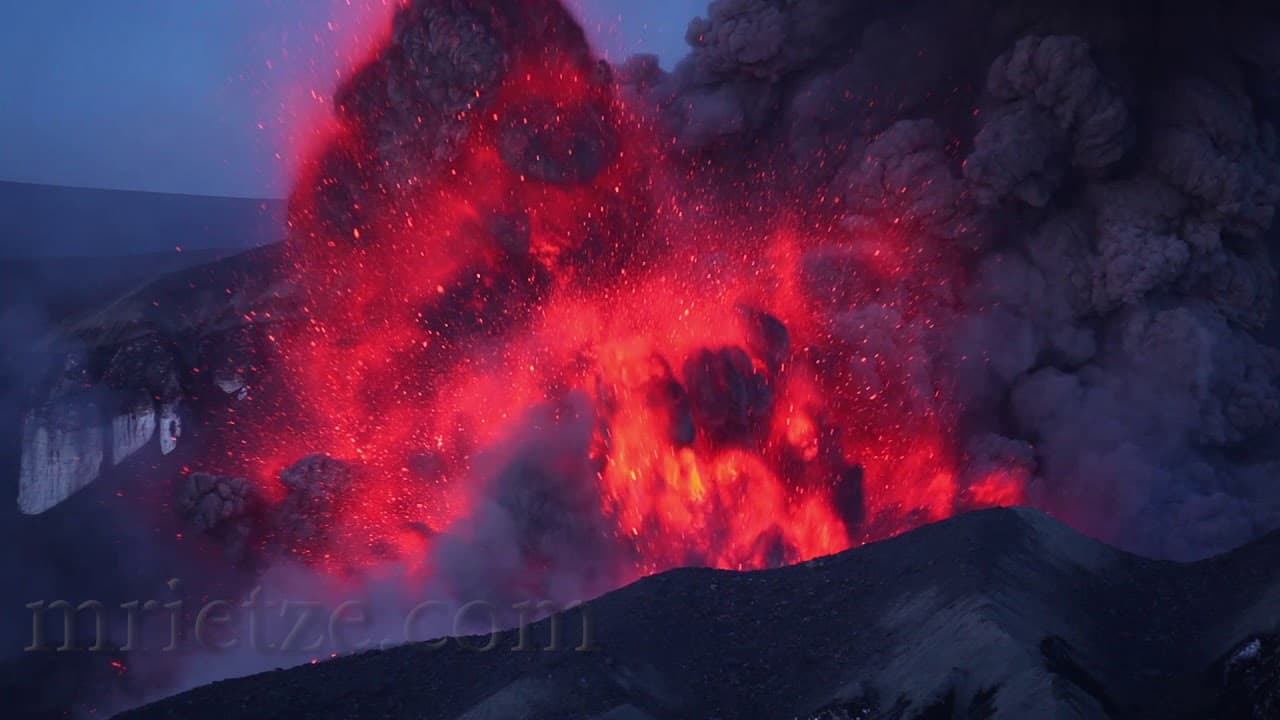
The Eruption of Eldfell Volcano on Heimaey Island
On a dark January night in 1973, a tragic course of events began to unfold in the Westman Islands. Islanders lived in the shadow of Helgafell but believed that this long-dormant volcano posed no direct or immediate threat. No significant activity had been recorded for 5900 years, so at first, no one took much notice of a series of small tremors.
However, just before 2 am on that fateful night, a long fissure opened up above the town, and lava flowed downhill to the harbour. Most residents were swiftly evacuated, with no loss of life.
Some remained behind to spray water over the lava to cool it before it reached and filled the harbour. Incredibly, they pulled off this almost impossible task. Though 400 buildings were destroyed, the residents of Heimaey were eventually able to return and get on with their lives.
Heimaey Eruption in January, 1973
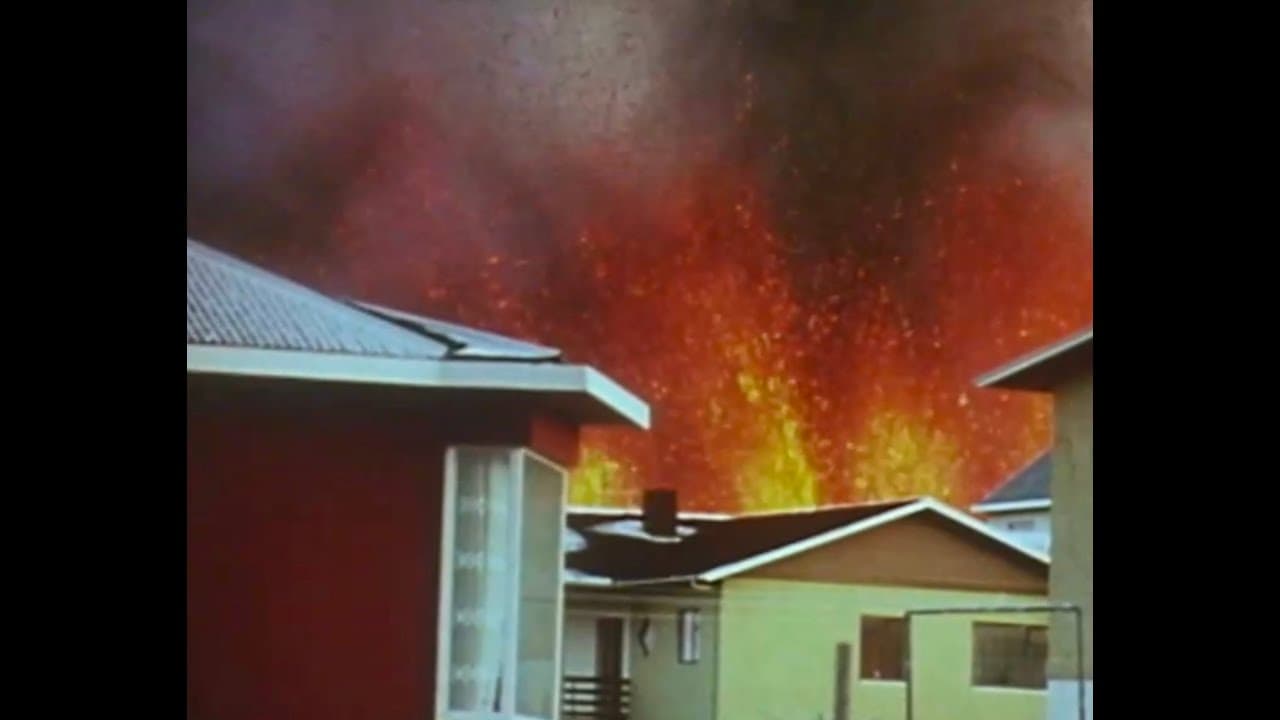
The Laki Eruption: The Most Devastating Volcanic Event in Recorded History
When Laki erupted over an eight-month period in 1873, it caused great hardship. A fissure (Lakagígar) opened up causing the volcano to spew enormous amounts of basaltic lava and tephra. This created a dense haze formed of droplets of hydrofluoric and sulphuric acid that not only blocked out sunlight but also led to acid rain.
Livestock was severely affected as grazing land was contaminated with toxic quantities of fluorine; vast numbers of sheep, horses and cattle died after eating poisonous fodder. The result was a terrible famine endured by the Icelandic people which led to the death of a quarter of the country’s population. Laki is currently dormant.
Laki Volcano Eruption in 1783

Must-See Volcanic Landscapes in Iceland
There are plenty of volcanic landscapes that are accessible if you are interested in the way tectonic activity, geology and nature interact.
Fagradarsfjall and the Reykjanes eruption sites
The most scenic and thrilling volcanic landscapes are naturally the youngest, still evolving, and shaped by ongoing eruptions. Visitors are particularly drawn to active volcanic sites and freshly-formed lava fields. The situation on the Reykjanes Peninsula is dynamic, and while eruption sites are often open to the public, closures can happen at any moment as conditions change.
We strongly recommend staying updated with the latest information before planning your volcanic visit. For the best and safest experience, booking an official guided tour is always the safest and smartest choice.
The Fimmvörðuháls trail
The Fimmvörðuháls trail is a demanding hike that leads from Skógafoss waterfall into Þórsmork, part of the magnificent Highlands region. It’s also one of the country’s most spectacular walking routes. To cover the entire 15 mile trail on foot, you’ll need to allow at least a day or even stretch it over two. Overnighters often use the Baldvinsskáli cabin.
A verdant riverside trail littered with waterfalls gives way to a barren lava field and squeezes between the Eyjafjallajökull and Mýrdalsjökull glaciers. The twin calderas of Magni and Móði, formed in 2010, are another highlight. The final stretch descends to the River Krossá in Þórsmörk.
Askja Caldera
Askja is located amid the remote Dyngjufjöll (Desert Mountains). At its highest point, it rises to 1510 metres tall. Its crater accommodates a caldera lake called Öskjuvatn which often freezes over in winter. It’s the second deepest lake in Iceland after Jökulsárlón Glacier Lagoon, descending to 220 metres below the surface.
This volcano grabbed people’s attention in 1875 when a massive eruption caused significant ash deposits, not just in Iceland but over in mainland Europe as well. Askja last erupted in 1961, though a decade or so ago there looked to be signs it might be awakening. This cold and dry place has also been used by NASA in the 1960s to train Apollo astronauts as it bears some resemblance to a lunar landscape.
Krafla Lava Fields
Located in the north of the country, these lava fields in Iceland are centred on a volcanic explosion crater called the Víti caldera. The name means Hell. It was formed in 1724, the result of a sudden and violent ejection of magma that left this large hollow, which is now filled with a vibrant turquoise lake. You can hike the crater rim to view it from all angles.
In the area surrounding the Krafla volcano, you’re left in no doubt that there’s more activity to come as you set eyes on the mud pots, solfataras and fumaroles that litter the area. Visitors can take a walk through the Leirhnjúkur lava field, one of several vast plains of cooled lava, or wander through the stark yet beautiful Hverir geothermal area that forms part of the same volcanic system.
Eldfell in the Westman Islands
The Westman Islands are located just a short ferry ride from the mainland. It’s best to allow a little leeway in your schedule as ferries are occasionally suspended in poor weather. This part of Iceland is home to Surtsey, a brand new volcano that emerged from the sea during an eruption that lasted from 1963 to 1967. It’s a protected area, with no visitors allowed; this restriction enables scientists to study vegetation succession without interference.
However, the lava field beneath Eldfell, a crater formed during the 1973 eruption, is accessible to tourists. At the Eldheimar museum you can see one of the homes consumed by the lava and begin to appreciate the extent of the damage.
Hike to the summit of Eldfell – its name means Fire Mountain – to take in the views.
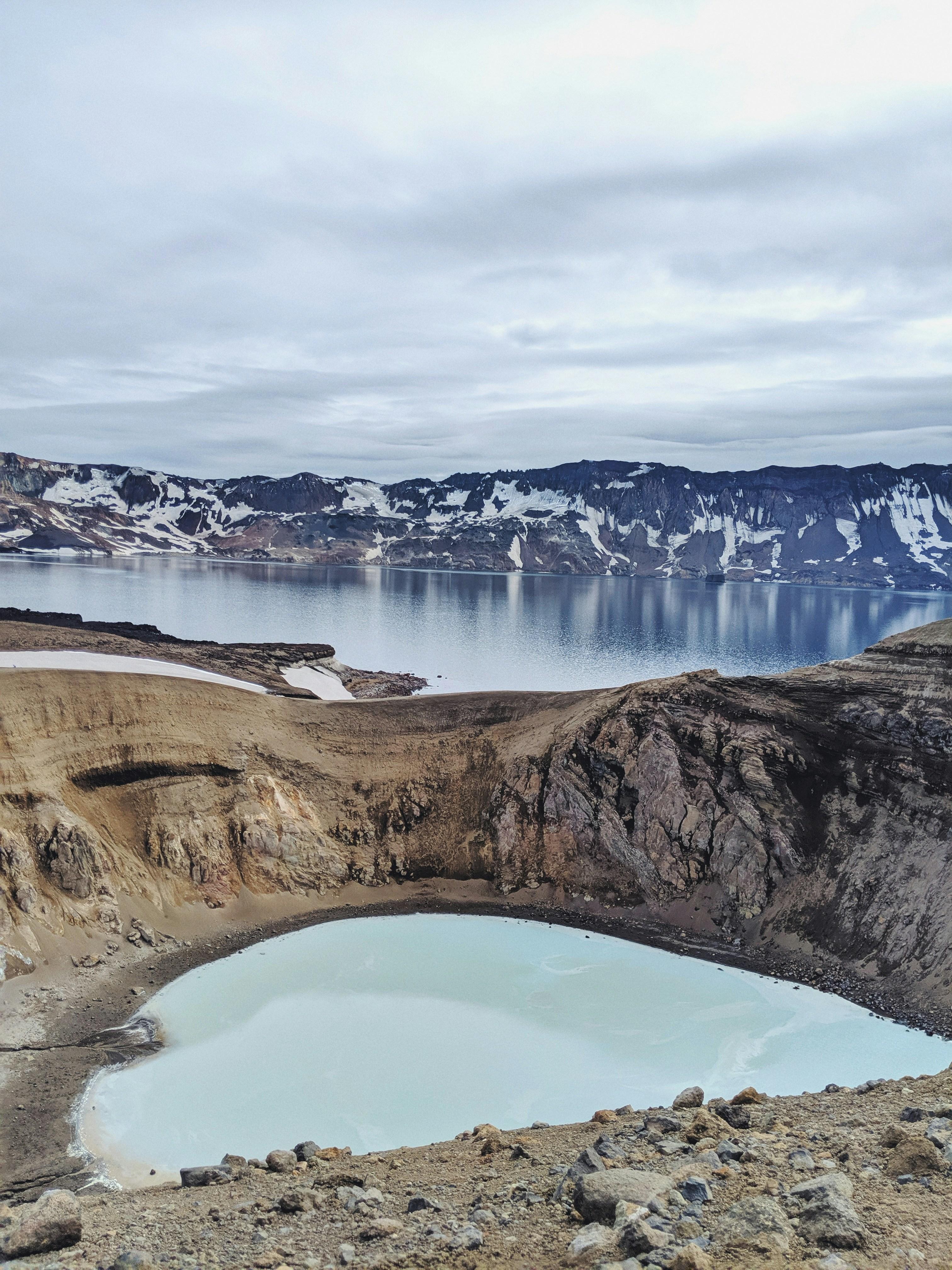
Víti and Askja
Víti, a geothermal crater in the Askja caldera, is known for its warm, milky-blue waters, where temperatures typically range between 20°C to 30°C (68°F to 86°F), making it a unique spot for bathing. Formed during a volcanic eruption in 1875, the crater lies within the larger Askja volcanic system in the Icelandic Highlands, a remote area popular for its otherworldly landscapes and active geothermal activity.
Explore Iceland’s Volcanic Landscapes
The Ultimate Iceland Volcano Hike
On our Volcanic Wonders with Grindavík visit tour, you’ll combine both to get a comprehensive picture of the processes that have shaped this fascinating region of Iceland.
This guided tour includes a manageable hike up to see the lava flows created during the 2021 and 2022 eruptions of Fagradalsfjall. Though this hike is possible without a guide, they’ll provide valuable context about the different phases of the eruption.
Afterwards, on this guided tour, take a walk around the Seltún geothermal area, admire the bubbling mud pools and fascinating scenery created by geothermal forces. We conclude the tour with a visit to Grindavík, a ghost town that has remained uninhabited since 2023 due to ongoing volcanic activity.
This is currently Iceland's most exciting volcano tour, showcasing the latest volcanic landscapes. Due to the ongoing activity and frequent changes in the area, the tour itinerary may adapt to offer the most up-to-date experience.
Other interesting lava field hikes and volcano tours
- Búðahraun lava field in the Snæfellsnes peninsula, where you can trek inland to the Búðaklettur crater.
- If you're travelling in North Iceland, visit the rugged lava formations of Dimmuborgir. Learn why it’s so named – it translates as “dark castles”. The lava columns and sculptures were the result of an eruption that took place around 2300 years ago.
- For a truly epic hike through Iceland’s volcanic landscapes, sign up for our seven-day guided trek, The Volcanic Trails.
- If you are looking for something more leisurely experience, you might want to catch the Highland bus to Landmannalaugar to investigate Laugahraun (“the hot spring lava flow”). Incidentally, on our Landmannalaugar Super Jeep Tour, you can cover even more ground and perhaps even get a glimpse of Mount Hekla, a powerful volcano nicknamed the “Gateway to Hell”.
The Reykjanes area is rapidly changing, and it is crucial to check for the most current updates before embarking on any hike. Your safety depends on staying informed and following all guidelines provided by local authorities.
Lava tubes and caves
One of the easiest ways to experience Iceland’s volcanic scenery is on a tour to one of its lava caves. Víðgelmir is the country’s biggest lava tube, and because it is well-lit and accessed by steps, it’s suitable for most visitors. It was formed more than 1100 years ago and is located within the Hallmundarhraun lava field in West Iceland..
Another lava tube you might consider visiting is located close to Reykjavik. Raufarhólshellir measures more than a kilometre in length and is evidence of the Leitahraun volcano erupted 5200 years ago. Though it’s relatively close to the surface, you’ll still need to access this very special place with a guide; these lava tunnel tours run throughout the year.
Descend into a volcano’s magma chamber
Þríhnúkagígur, or “three peaks crater”, is a dormant volcano situated within the Brennisteinsfjöll volcanic system. It’s notable for its empty magma chamber left intact after an eruption finished more than 2000 years ago. This is highly unusual, as such magma chambers typically collapse after they’ve dispatched their contents.
In fact, this is the only place in the world where you can descend into a magma chamber and live to tell the tale. Tours run from May to October. They commence with a scenic hike across a lava field. With a harness and helmet in place, you’ll be lowered into the volcano on an open-sided lift. At the bottom, marvel at the geology within this cavernous space and try to wrap your head around how it was created.
Helicopter tours
Helicopter tours aren’t cheap, but they do provide the opportunity for a thrillingly different perspective on Iceland’s volcanic scenery. During the first stages of the Fagradalsfjall volcanic eruption, such tours – and those in small sightseeing planes – surged in popularity, and with good reason.
Operators offer a range of tours that overfly the Reykjanes peninsula’s eruption sites and, in some cases, land amid dormant craters further afield. It’s the ideal way to appreciate the scale of a volcanic eruption and the extent and patterns of its lava flows in relation to the distribution of craters.
Inside The Volcano
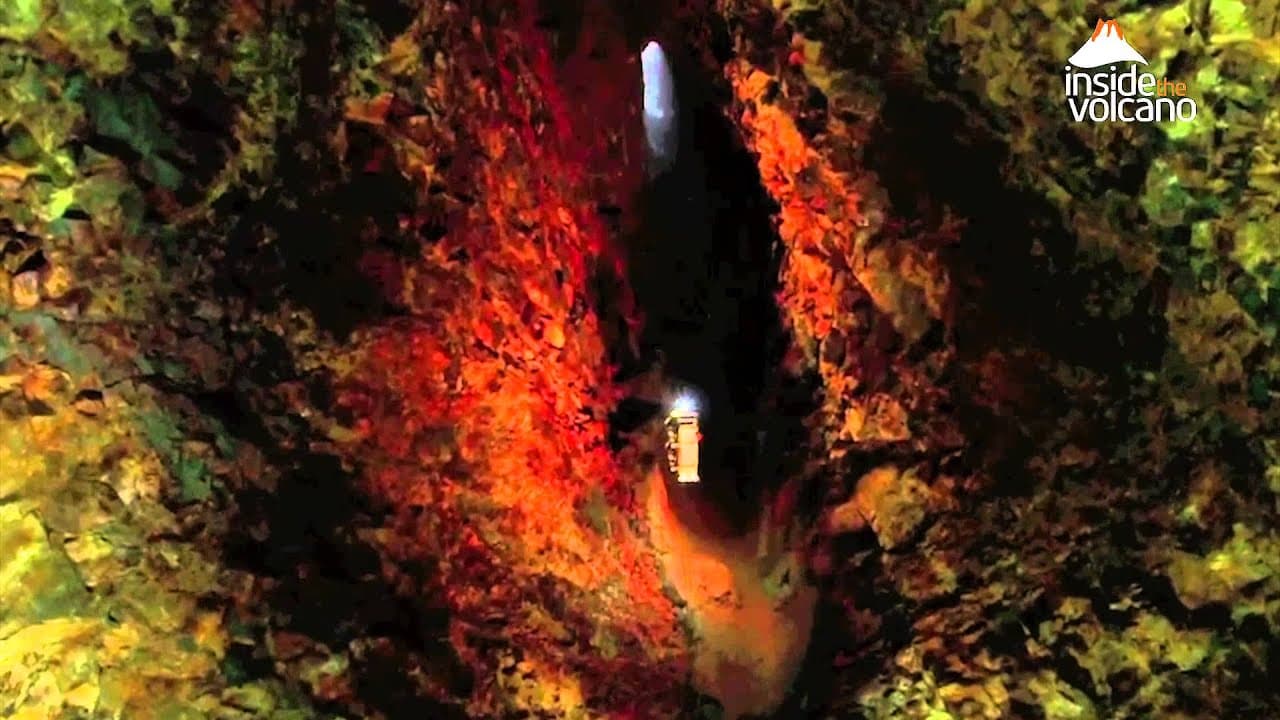
The Best Time to Visit Iceland’s Volcanic Landscapes
Most hiking routes and volcanic landforms that are accessible on foot can be visited throughout the year, although some – such as the Fimmvörðuháls trail – are summer-only attractions. Regardless, hiking in bad weather isn’t advisable, so always check the weather forecast before setting out, even during the warmer months.
Certain volcano tours are restricted to summer also. For instance, you can only descend into Þríhnúkagígur from late spring to early autumn. In contrast, tours of the lava tunnel Raufarhólshellir can be booked year-round, as can those that take you to the Víðgelmir lava tube.
Helicopter flights over Iceland’s volcanic landscapes depart year-round but are weather-dependent. Even in summer, cancellations are common, so it’s best to make your reservations early in your trip to give you the flexibilityto rebook if that becomes necessary.
How to Stay Safe on an Iceland Volcano Tour
Volcanoes, unless extinct, always have the potential to reawaken even if they’ve been dormant for many years. Take Fagradalsfjall, for example; it had been inactive for eight centuries before the 2021 eruption. Though eruptions can occur without warning, they are often preceded by telltale events such as earthquake swarms, which are closely monitored by volcanologists and act as warning signs.
For this reason, it’s always best to visit a volcanic area on an organised tour. If you intend to do it alone, then be sure to do some thorough research on official sites like that of the Icelandic Met Office. They provide accurate information about earthquakes. Also, the site classifies each Icelandic volcano on a five-colour scale according to current activity and publishes regular updates about the progress of ongoing eruptions.
If you embark on a hike within a volcanic or geothermally active region, pay particular attention to where you are going and never leave marked trails. Even these can be characterised by loose scree or gravel, uneven slopes and steep gradients.
Meanwhile, steam and bubbling water in these areas can be scalding hot. Finally, remember that noxious gases may be present – not all volcanic hazards are visible.
Before departing for such a hike, make sure you are confident about finding your way and carrying a charged mobile phone, though appreciate that it may not always have a signal. Always inform someone of your plans and when you expect to return. Be sure to dress warmly and appropriately for Iceland’s changeable conditions. Carry sufficient water and snacks.
Lava caves and lava tubes should only be visited in the company of an experienced guide. Even where walkways and steps have been installed to enable visitor access, these environments aren’t predictable places; rocks can become dislodged, and collapses can occur. On a tour, you’ll wear a helmet and remain with the group at all times for your own safety.
Exploring Iceland’s volcanic scenery and landmarks is a must during your visit. This is how you appreciate not only the drama of the current landscapes but gain a deeper understanding of the processes that led to their formation. Take a look at our selection of volcano tours and incorporate this significant theme into your trip itinerary.
Watch the Reykjanes Volcanic Eruptions Live
When there is an ongoing eruption, you can witness the action firsthand through live webcams strategically placed in key locations. Below is a mosaic view featuring four webcams, allowing you to immerse yourself in the spectacle.
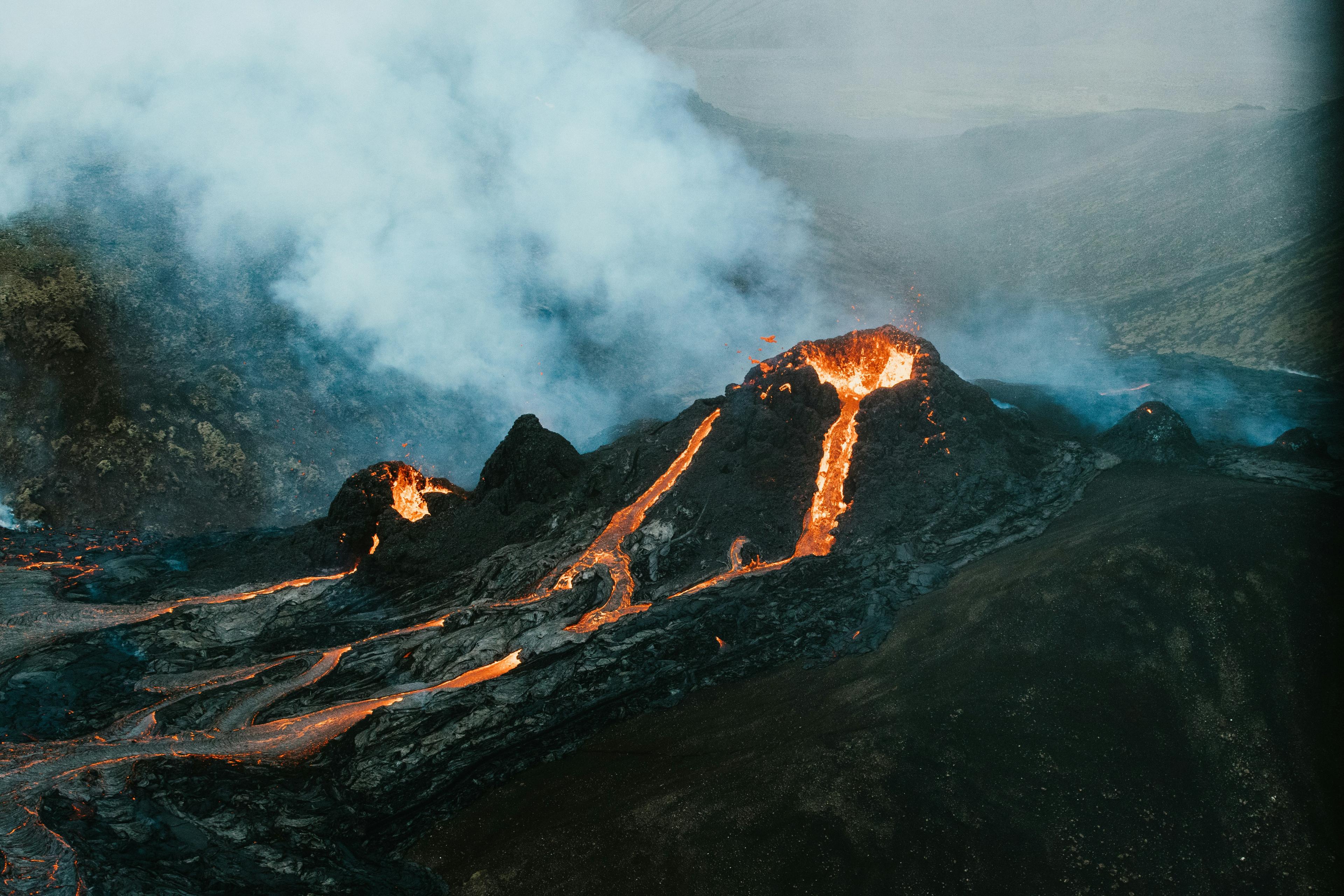
Questions and Answers about Iceland's Volcanoes
Various webcams are available for live viewing of ongoing volcanic eruptions. These webcams also help determine if an eruption is currently happening. When a new eruption occurs, the cameras are promptly adjusted to display the new site. Therefore, if the camera views do not show any eruption, it indicates that there is no active eruption on the Reykjanes Peninsula.
The recent volcanic activities on the Reykjanes Peninsula have garnered global attention due to their frequency and the nature of these events. Since 2012, there is a volcanic eruption every few months and the frequency is increasing, suggesting a significant shift in geological activity in the region.
Yes, the first eruptions in the region occurred in 2021 and 2022 and were notable, attracting many visitors. The 2021 eruption ended an 800-year dormancy period on the Reykjanes peninsula.
Yes, volcanic activity, including the recent eruptions, is expected to continue and is considered a normal aspect of life in Iceland.
The residents of Grindavík are nicknamed "GrindaVíkings," symbolizing their enduring spirit and solidarity during the volcanic crises.
These eruptions are crucial for understanding shield volcanoes, the mantle source, tectonic activities, and improving predictive models for future volcanic activities. Notably, the recent series of eruptions on the Reykjanes Peninsula offers an unprecedented opportunity to observe the development of a shield volcano from its initial stages. This is significant because it's the first time in recorded history that scientists have the technology and methodologies to closely monitor and study the evolution of a shield volcano in real time. This unique scenario provides invaluable insights into the formation processes of shield volcanoes, their eruption patterns, lava flow dynamics, and the overall impact on the surrounding geological landscape. The data gathered from these eruptions could revolutionize our understanding of volcanic systems and contribute significantly to global volcanic research.
Gas pollution is a concern near the eruption site, but the windy conditions on the Reykjanes peninsula help disperse gases quickly, minimizing risks.
Volcanologists suggest that the current phase of increased activity may persist for years or even decades, possibly indicating a shift to shield volcano-type behavior.
Travelers view the volcanic activity as part of Iceland's appeal, with intermittent eruptions varying in duration, and life, especially in tourism, remains largely undisturbed.
Given the recent pattern of frequent eruptions since 2021 and expectations that this activity may continue for years or even decades, it is reasonable to anticipate that the volcano on the Reykjanes Peninsula could erupt again within a relatively short timeframe, possibly within weeks, or months. However, it's important to note that predicting the exact timing of volcanic eruptions is a complex task, even with advanced monitoring and analysis. Volcanologists rely on various indicators, including seismic activity, ground deformation, and gas emissions, to forecast eruptions, but these predictions often come with a degree of uncertainty. Additionally, while the Reykjanes Peninsula volcano is the closest active volcano to Reykjavík, it is still quite far from the city, which helps mitigate direct risks to Reykjavík from the eruptions.
The recent effusive eruptions on Iceland's Reykjanes Peninsula, while not explosively dangerous, have led authorities to implement precautionary measures, including localized evacuations around the eruption sites. These safety measures cover a few square kilometers, ensuring the protection of nearby residents. Despite these eruptions, the wider Reykjanes Peninsula and Iceland remain safe, with minimal impact on tourism and daily life. The frequent volcanic activity has only caused temporary closures of the nearby Blue Lagoon spa. Continuous monitoring and timely alerts by Icelandic authorities help in minimizing risks and managing public safety effectively.
The duration of volcanic activity in Iceland varies greatly depending on the specific eruption and geological conditions. Some eruptions may last a few days, while others for months or even years. Ongoing scientific monitoring provides better estimates as events unfold.
Generally, it is safe to travel to Europe despite volcanic activity in Iceland. The impact of volcanic eruptions on air travel and the wider region largely depends on the nature of the eruptions. Most recent eruptions in Iceland have been localized and had zero impact on broader European air travel or safety.
Iceland's residents have adapted to their country's dynamic geological environment, fostering a strong sense of community and resilience. They are supported by robust emergency response systems, which enable them to live with both admiration for the natural beauty of their surroundings and a readiness for potential evacuations due to volcanic activity.
The response of individuals to volcanic events varies based on their personal experiences and proximity to the events. For example, residents of Grindavík initially found the 2021 eruptions fascinating when the eruption site was at a safe distance. However, the earthquakes leading to these eruptions affected them more significantly than those in Reykjavík, where tremors were barely felt. While some people found the geological activity exciting, others experienced fear and anxiety.
The situation became particularly challenging for Grindavík residents when an eruption occurred closer to the town, necessitating evacuation and significantly altering their lives. Some residents wish to return after volcanic activity decreases, while others prefer not to return at all.
Icelanders, in general, are accustomed to volcanic eruptions but naturally prefer to witness them from a safe distance and in uninhabited areas. Despite the history of devastating eruptions in Iceland, these natural events are accepted as part of life on the island. This acceptance is coupled with a developed resilience to the unpredictability of nature, highlighting the Icelandic spirit of adapting to and coexisting with their unique environment.
There are two important things to bear in mind when dressing for an Iceland volcano tour.
Firstly, Iceland has notoriously volatile weather and on a volcano tour you’re going to be spending your time outside. That means that a waterproof jacket and warm layers are a must.
Then, if you’re walking on volcanoes in Iceland, you’ll need to have sensible shoes. That means shoes that are durable, sturdy, and that will protect your feet on rugged terrain.
Fagradalsfjall is by far the most popular active volcano to visit in Iceland. Thanks to its recent eruptions in 2021 and 2022, it has left fascinating lava fields to explore. And what’s more, it’s conveniently located from Reykjavík, making it the perfect day out from the city.
But it’s not the only active volcano you can visit in Iceland. Along the south coast of Iceland, you’ll see many active volcanoes, including the famous Katla and Hekla. You can also see Eyjafjallajökull, whose eruption in 2010 caused disruption to international air travel.
With breathtaking views and opportunities to glimpse the sheer power of the earth, an Iceland volcano tour could be one of the best things you do on your trip.
At Icelandia, we’ll help make your tour extra special. You’ll witness these jaw-dropping fiery mountains led by an expert guide, who’ll be able to answer all your questions.
There are over 130 volcanoes in Iceland, including a mix of active and inactive volcanoes. Active volcanoes are those that have erupted recently or are likely to erupt again soon, and there are about 30 of these scattered across Iceland.
One of the most popular volcanoes to visit in Iceland is Fagradalsfjall. Erupting frequently between 2021 and 2022, the volcano is still technically active, but you may not see it erupt. That said, you can still visit to see the incredible fresh lava fields that the volcano has created.
The active volcano is located in the Reykjanes peninsula, recognised as a UNESCO Geopark thanks to its geothermal activity.
There is no obligation to use a tour guide to visit Fagradalsfjall. But a local guide can really bring your tour experience alive. They’ll share stories and information about the volcano that you won’t read in the guidebooks and answer any questions you may have.
Volcanoes in Iceland erupt very often. If you don’t see one on your trip to Iceland this time, there’s likely to be another one to visit pretty soon!
Here are the latest updates on volcanic activity in Iceland.
Iceland is one of the most volcanically active countries on the planet. Thanks to its position on the Mid-Atlantic Ridge—the tectonic plate boundary between Europe and North America—it’s a place where you can find volcanoes, geysers, hot springs, and many other exciting geothermal features.
In fact, there are thought to be more than 30 active volcanic systems in Iceland, with another 100 or more that are now inactive.
You can visit the Fagradalsfjall volcano without a tour. From the carpark, the walk up the most recent eruption site is about 7 kilometres (4.5 miles) with an ascent of 300 metres (990 feet). If you have a car and are a confident walker, there’s nothing holding you back.
That said, a tour is by far the easiest way to reach Fagradalsfjall from Reykjavík and along the south coast. What’s more, you’ll also have the benefit of learning about the volcano and Iceland in general from a local expert.
The walk to the Fagradalsfjall volcano is about 7 kilometres (4.5 miles) from the carpark. Over that distance you’ll climb about 300 metres (990 feet) too. It’s important to be aware that the walk takes you across a rugged, rocky landscape. As such, the terrain is a little tricky in places.
Related Articles
See all articlesRecommended tours

South Coast Wonders
This carbon-neutral Iceland South Coast tour is perfect for nature lovers looking to explore Iceland’s top natural attractions in just one day. Visit the stunning Seljalandsfoss and Skógafoss waterfalls, walk along the famous Reynisfjara black sand beach, see the breathtaking Sólheimajökull glacier, and experience the charm of Vík village—and enjoy incredible landscapes along the way.
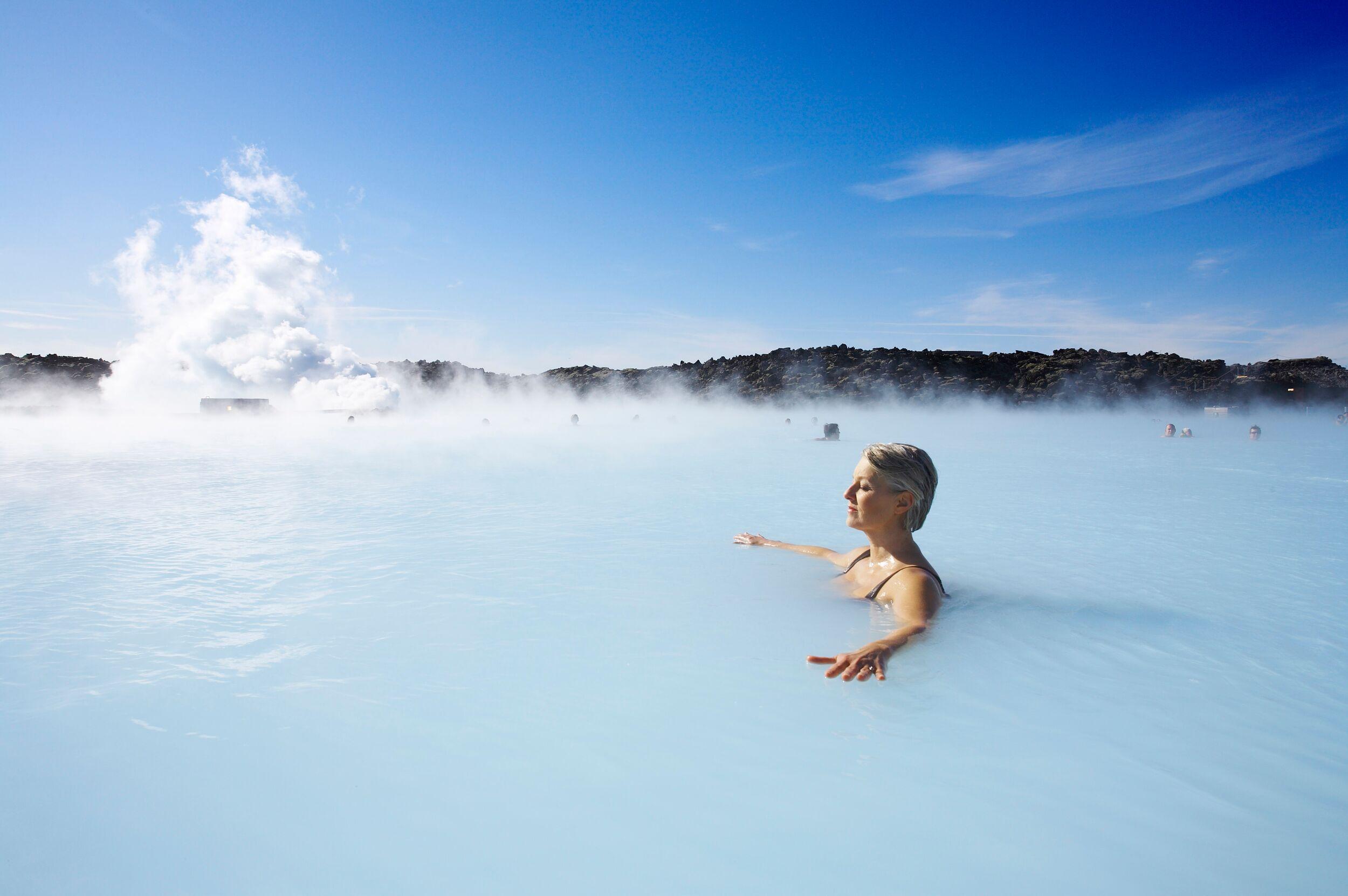
- Best seller
- Popular
Blue Lagoon & Northern Lights
Enjoy a perfect winter day in Iceland! Experience the best of Iceland with this package of two of the island’s most popular tours in one day! Soak in the milky blue healing water of the Blue Lagoon, which is one of Iceland's most famous tourist attractions and is considered by many to be a once-in-a-lifetime experience and an unmissable part of a visit to Iceland. After your return to Reykjavík, a guide will lead you on a search for the elusive northern lights! Watching the lights dance and flicker in the sky, changing shape and colour, is incredible. Prepare to be dazzled!

- Multiday Tour
Iceland On a Budget - 7 days
Explore Iceland’s breathtaking landscapes, geothermal hot springs, and volcanic wonders on this 7-day (6 nights) Iceland on a Budget package. See the geysers and waterfalls of the Golden Circle, marvel at the black sand beaches of the South Coast, and discover Reykjavík’s cultural landmarks with a Hop-On Hop-Off city pass. Relax in the serene geothermal pools of Hvammsvík and step inside a real lava tunnel, where you’ll walk through Iceland’s volcanic history. With affordable travel, carbon-neutral transfers, and expert local guides, this package provides a budget-friendly way to experience Iceland’s best sights.
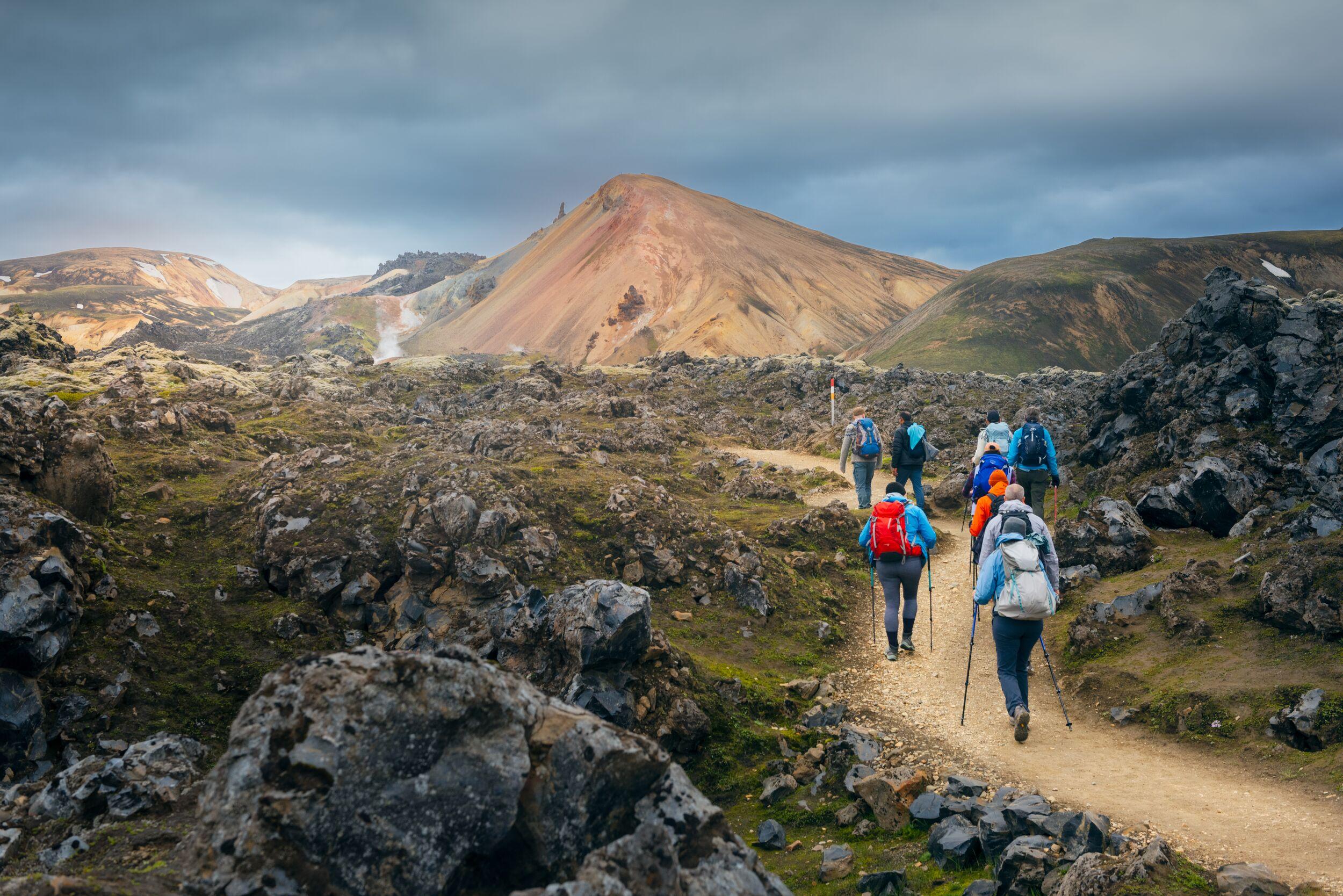
6-Day Laugavegur & Fimmvörðuháls in Huts
Experience the breathtaking beauty of the Icelandic highlands on the Laugavegur & Fimmvörðuháls Hiking Tour. This six-day trek is an extraordinary journey through some of Iceland's most stunning landscapes, perfectly blending two of the country's most famous trails.
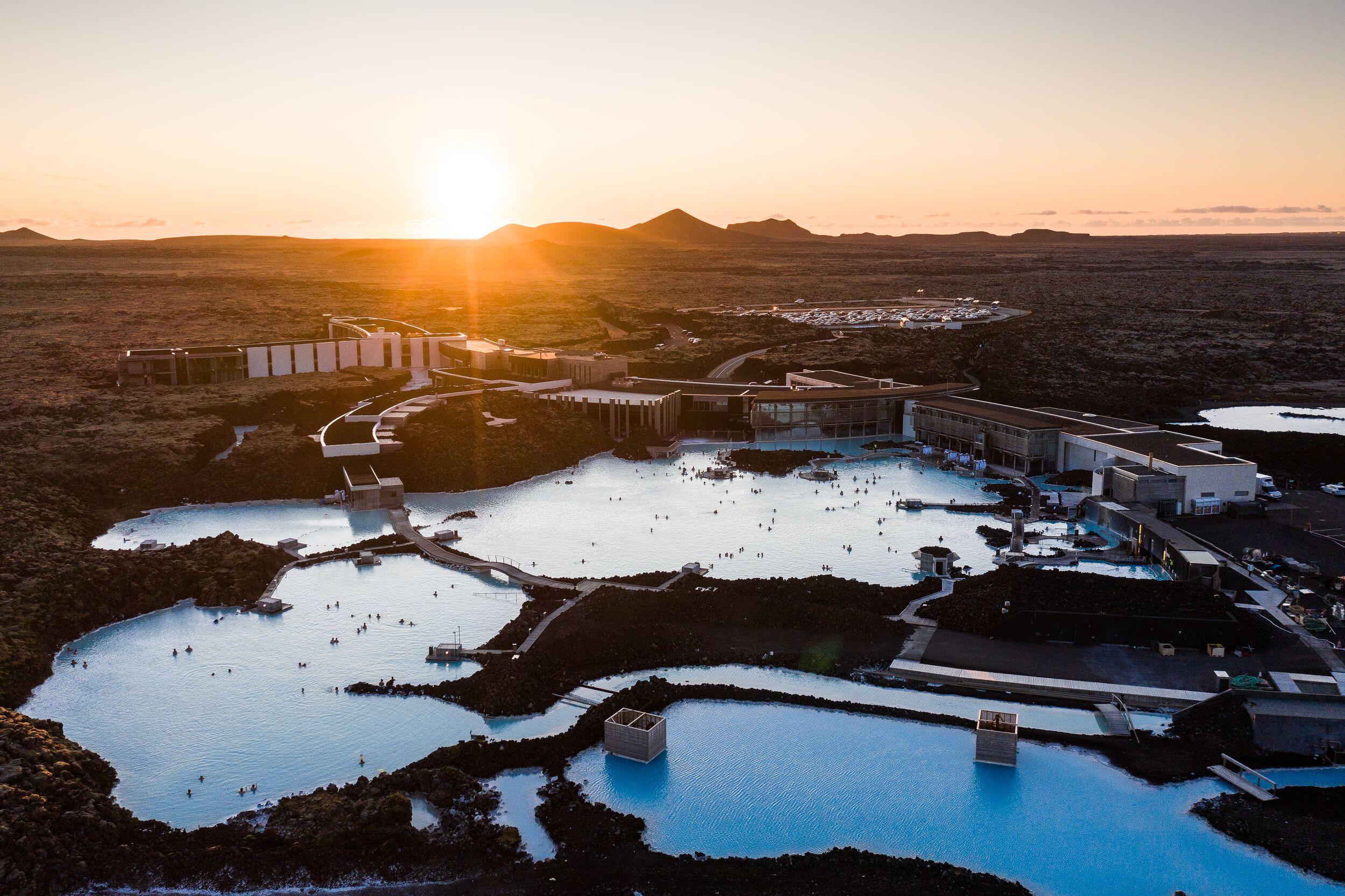
Volcanic Wonders with Grindavik Visit & the Blue Lagoon
Embark on a carbon-neutral journey through Iceland’s stunning volcanic landscapes. Enjoy a refreshing hike across a lava field, formed by recent eruptions, and then unwind with a soothing soak in the healing geothermal waters. This perfect combination of adventure and relaxation offers an unforgettable way to experience the raw power and serene beauty of Iceland’s natural wonders.
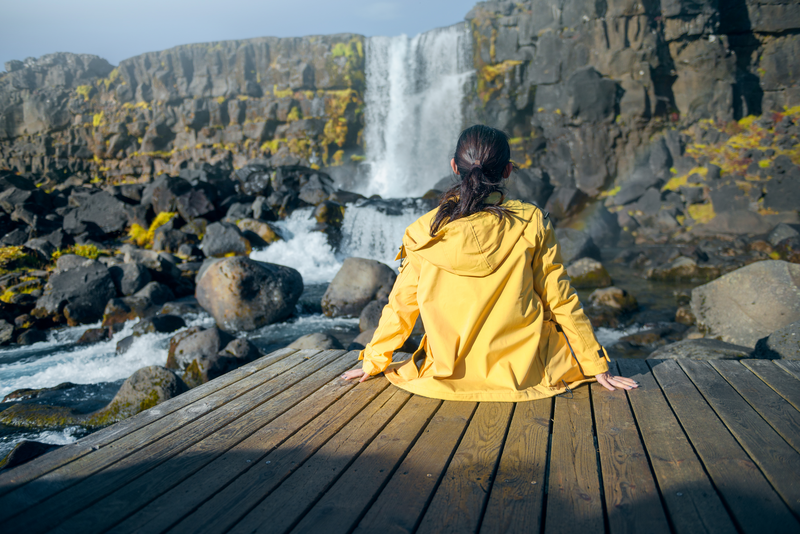
The Golden Circle & Hop On Hop Off - Combo Deal
Experience the best of Iceland's natural wonders and the charm of its capital city with our Golden Circle & City Sightseeing combo. This tour combines an insightful 8-hour journey through the iconic Golden Circle, with a visit to the Fridheimar Tomato Greenhouse along the way, and additionally, the flexibility of exploring Reykjavík at your own pace on the Hop On Hop Off bus.


